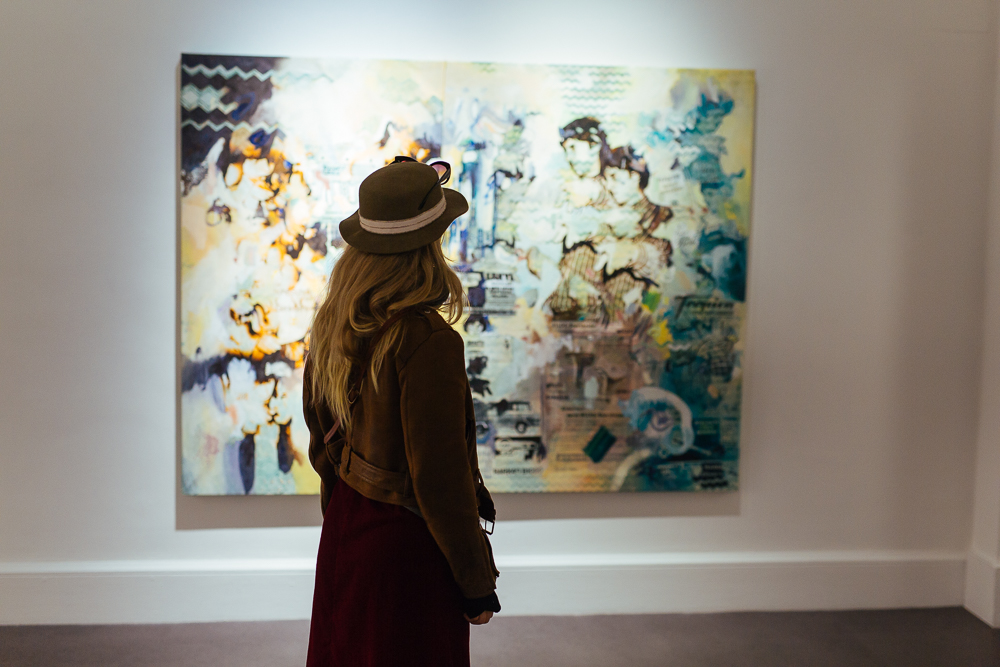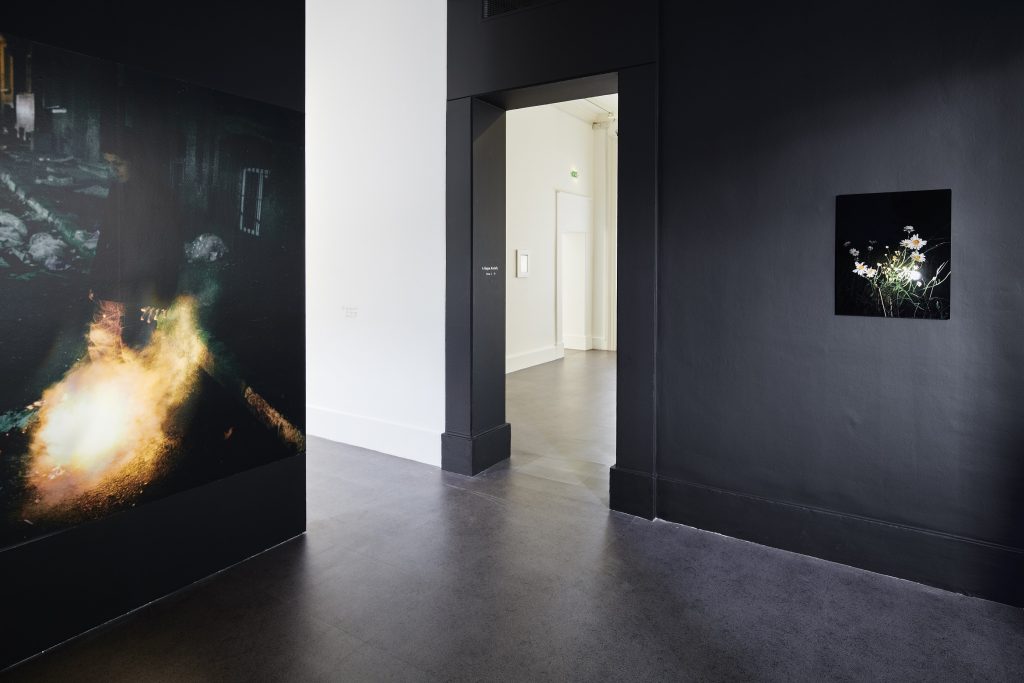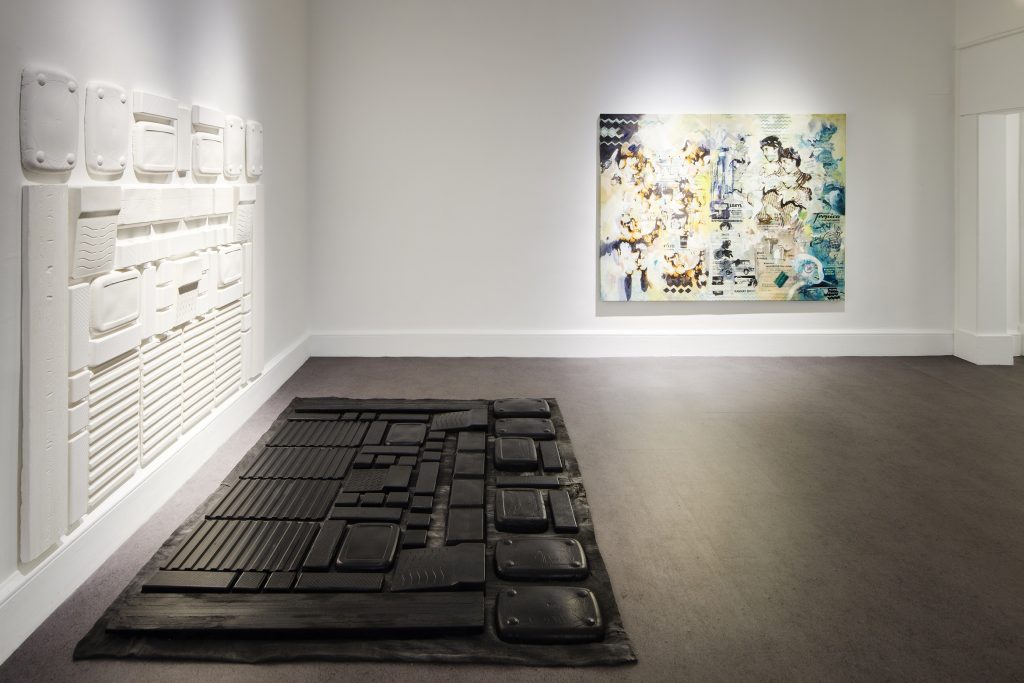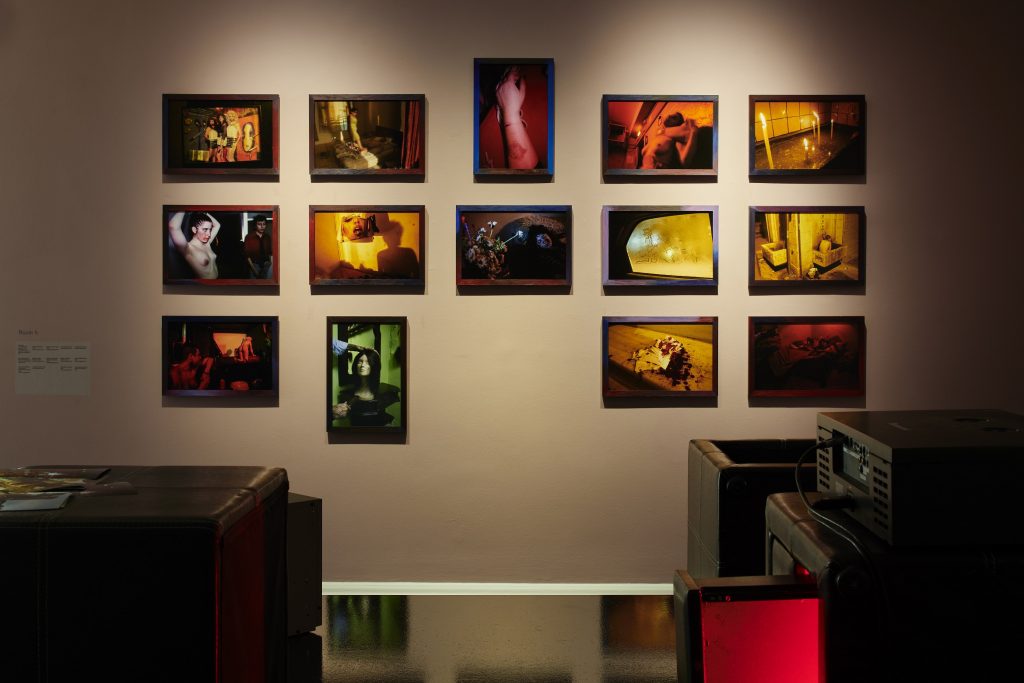A Vague Anxiety by Seán Kissane

The exhibition A Vague Anxiety at IMMA invited a range of emerging Irish and international artists to consider the macro and micro anxieties that inform a certain experience of the world today. In this essay, curator of the exhibition Seán Kissane considers some of the ways that the technologies that drive our daily lives influence that experience. Whether through rolling news, social-media led political movements or online dating apps, Kissane highlights how the world and our experience of it is fundamentally changing.
A Vague Anxiety is designed to take the viewer on a visual journey through some of the myriad concerns and anxieties that we face in the contemporary world: from global warming and climate change, the rise of right-wing politics and hard borders, the housing crisis and destruction of habitats to the digitisation of intimacy and fragmentation of identities, the weight of history and finally to childhood and the assault on innocence. The artists in the exhibition address these concerns in an inherently 21st century manner investigating these themes through a variety of mediums, offering neither questions nor solutions but a reflection on our present tensions.

In today’s media-saturated environment, it is nearly impossible to avoid the relentless barrage of news, fake news or even material generated by bots planted in our news feeds for commercial or political ends. The world has always been a place where bad things happen, but to a degree we were insulated from them through ignorance. Traumatic events might go unreported for days or weeks as journalists had to find their way to a site and then transmit their story. Nowadays everyone with a smartphone is also a journalist, recording and uploading events in real time. Experiencing this constant ‘hum’ is challenging, and, at any given time, it can feel as if the world is collapsing around us. Yet our bodies are physiologically programmed to respond to signals of danger as a survival mechanism, so we feel compelled to engage with the news.
Knowledge is power as we attempt to control our environment. We respond to perceived threats, and the ‘fight or flight’ response is triggered, flooding the body with adrenaline and cortisol. This ‘hum’, however, means that as we are constantly triggered, we begin to tire of events. We think that news channels are crying wolf, and disaster fatigue sets in, making us lose empathy. This in turn has the real effect of lessening our sense of urgency around a ‘real’ disaster and so becoming apathetic donors or not volunteering to take action.

When Facebook first emerged, it was a tool developed by college nerds to rate college girls as ‘hot or not’. It has unwittingly become a global platform with almost two billion users. Some are genuine ‘friends’; most are strangers who are connected through mutual interests or concerns. Social media was a contributory factor in the Arab Spring movement, which has led to political change in Egypt and Tunisia, but most horrifically the almost complete obliteration of the state of Syria and the largest ever number of displaced persons in history. There is substantial evidence to suggest that governments have used social media to influence the outcomes of popular movements to the extent that we can now describe social media as having been ‘weaponised’. Facebook literally puts your life at risk.

On an individual level, social media sites such as Facebook attempt to consume as much time and attention of the user as possible. As the dictum goes, ‘If you are not paying for the product then you must be the product.’ Features such as the ‘like’ button give users a little dopamine hit each time they get positive feedback. This in turn encourages them to upload more content, in a ‘social validation feedback loop’ that exploits a vulnerability in human psychology. The mild hit one gets from a ‘like’ is taken to extremes with dating apps such as Tinder that contain an ‘infinite scroll mechanism’, with no stop button.
The science says that it is not the dopamine which is addictive, but the desiring or ‘waiting phase’. While natural rewards contain built-in satiety signals at consummation (one can only eat/dance/make love for so long), when we’re deliberately kept in the ‘wanting’ phase by persuasive design, there is no signal telling us when to stop.[i] Ironically the statistics say that young people are having less sex than their peers of a generation ago. What any of this is doing to our brains is, as yet, entirely unknown; but it is clear that we carry a new potential addiction around in our smartphones daily. One wonders if in twenty years we will look back and wonder at the unregulated nature of the internet and compare it to cigarette smoking, or worse!

As well as all of this remaining untested in adults, we have no idea what impact this is having on children. Many toddlers now happily occupy themselves swiping on tablets. As those same children grow older, they almost inevitably acquire a smart device of their own. Increasingly it is impossible for parents to moderate the content their children access, the recent ‘Momo’ hoax being a case in point. The fictional online character “Momo”, was alleged to have encouraged children to self-harm, until later described as a hoax. It was entirely plausible that young children might be encouraged to put their lives at risk. The mass hysteria was stoked by a Kardashian (a social-media ‘influencer’) to the extent that questions were asked in the British parliament. ‘Momo’ could be described as an acute threat.
The more general or chronic threat is the constant exposure of inappropriate sexual content to children. The result has been described as the ‘pornification’ of children. Boys are affected through developing unrealistic expectations around sex and intimacy. Girls are pressured to display themselves and their bodies. Both have to live up to a new normative that is explicitly sexualised. Ironically, as adult women fight for gender equality, their daughters are working themselves backwards into a state of sexual objectification.

The ‘gaze’ is no longer male; the gaze is now that of the camera lens which is reflexive, turned back on itself to take the perfect selfie. Teenagers now live with an almost constant sense of anxiety about how they are represented on social media – both by themselves and others. But because they have never known any different, it is their normal. And it seems it will become so for all of us too, regardless of age, race or creed – a vague anxiety that permeates all areas of our lives.
[i] Mia Levitin, ‘The One Thing That Dating Apps Will Give You For Sure? Addiction’, The New Statesman, 13 February 2018, available at https://www.newstatesman.com/2018/02/one-thing-dating-apps-will-give-you-sure-addiction, accessed 9 March 2019.
Categories
Up Next
Poet Sarah Clancy responds to Janet Mullarney
Fri Jul 19th, 2019